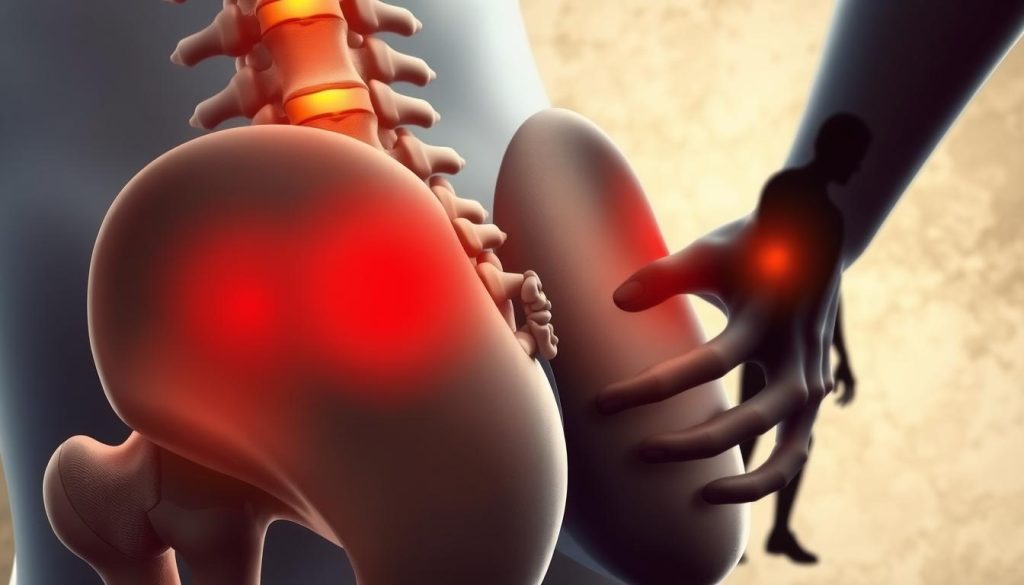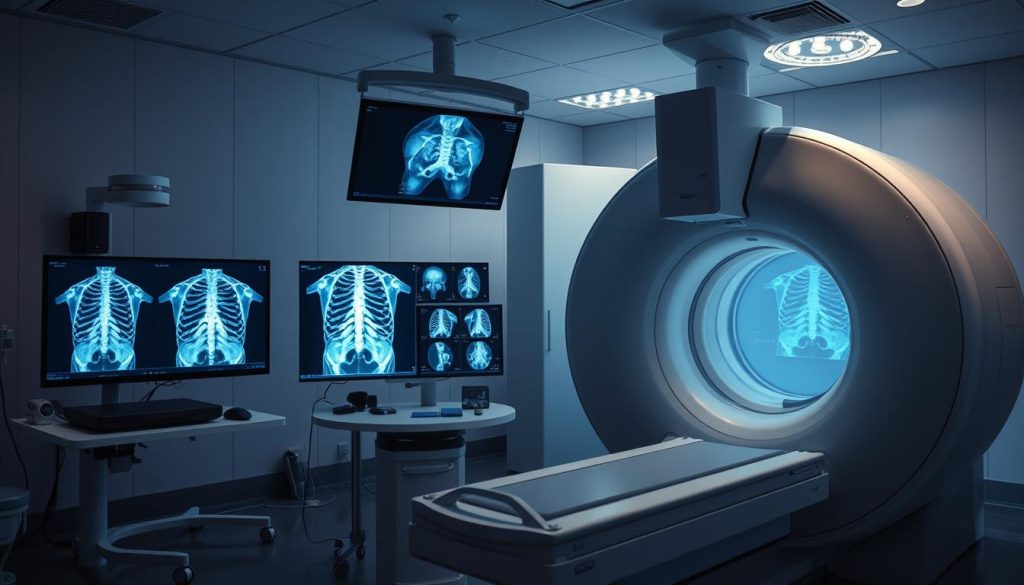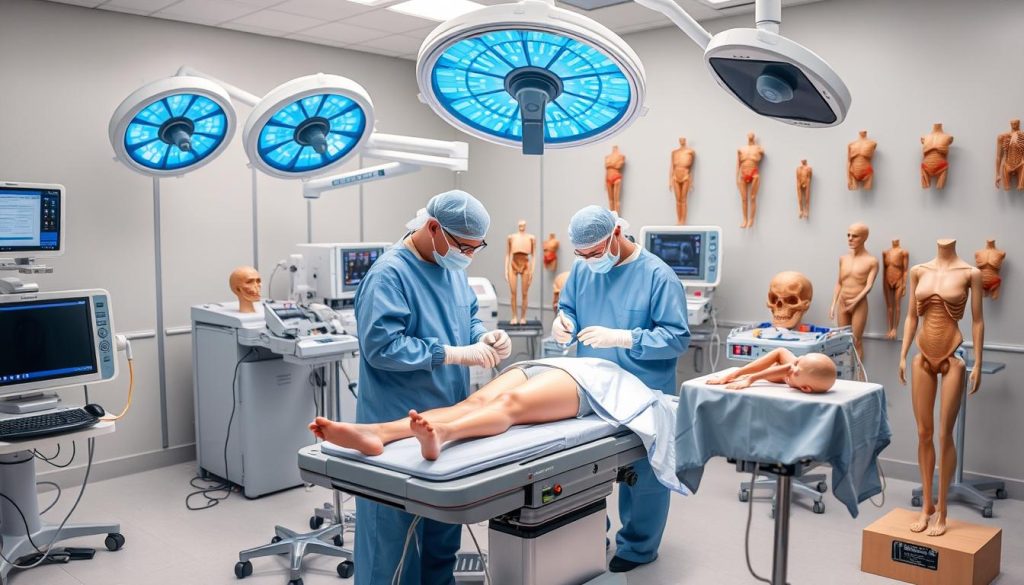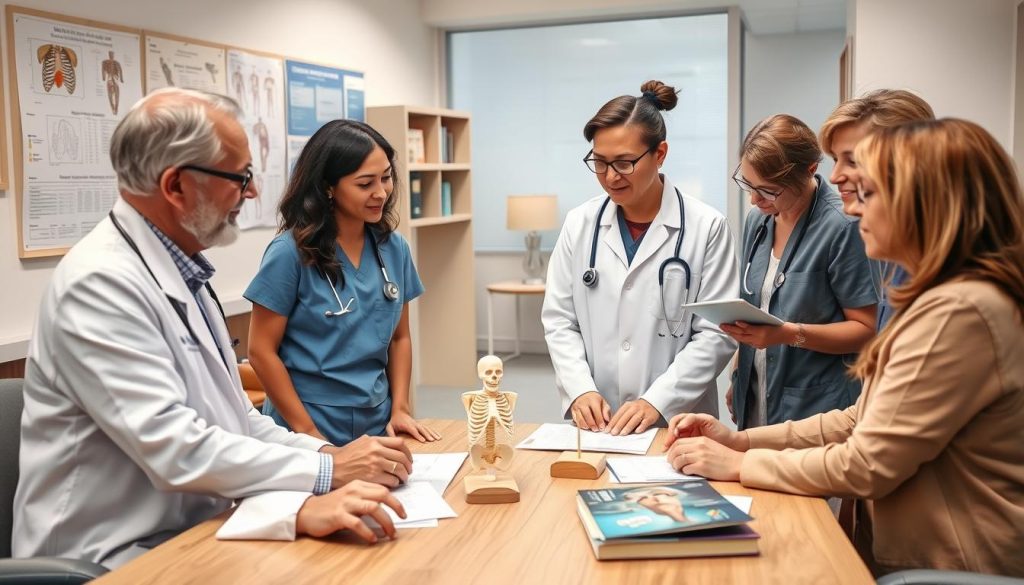Bone cancer is a rare and serious disease. It affects the body’s bones, causing pain and making it hard to move. It changes lives in big ways for those who get it.
In this guide, we’ll look at bone cancer in detail. We’ll cover its types, symptoms, and how to diagnose and treat it. This information is for anyone wanting to learn more about bone cancer.
If you’re a patient, caregiver, or just interested in bone health, this is for you. We’ll explore the latest in bone cancer research and care. Let’s learn more about bone cancer together.
What is Bone Cancer: Definition and Overview
Bone cancer is a rare condition where abnormal cells grow uncontrollably in bone tissue. It affects the skeletal system and can occur in any bone. Orthopedic oncology specialists focus on diagnosing and treating these complex bone tumors.
The Structure and Function of Healthy Bones
Bones provide structure, protect organs, and store minerals. They have a hard outer layer and a spongy interior. Healthy bones constantly renew themselves through a process called remodeling. When this process goes awry, it can lead to the formation of bone tumors.
Primary vs Secondary Bone Cancer
Primary bone cancer starts in the bone itself. It’s less common than secondary bone cancer, which spreads from other parts of the body. Primary bone tumors include osteosarcoma and Ewing sarcoma. Secondary bone cancer often originates from breast, prostate, or lung cancers.
Impact on the Skeletal System
Bone cancer can weaken bones, making them prone to fractures. It may cause pain, swelling, and limit movement. As the tumor grows, it can compress nearby nerves and blood vessels. In advanced stages, it may spread to other bones or organs, complicating treatment.
Understanding bone cancer is key for early detection and effective treatment. If you experience persistent bone pain or swelling, consult an orthopedic oncology specialist for proper evaluation.
Common Types of Malignant Bone Tumors
Bone tumors can be scary, but understanding them is key. Let’s explore the most common types of malignant bone tumors that affect people.
Osteosarcoma: Most Common Bone Cancer
Osteosarcoma is the most frequent bone tumor in children and teens. It often starts in the knee, hip, or shoulder areas. This cancer makes abnormal bone tissue and can spread fast if not treated early.
Ewing Sarcoma: Aggressive Bone Disease
Ewing sarcoma is a rare but aggressive bone cancer. It usually affects kids and young adults. This tumor can grow in bones or soft tissues. The pelvis, legs, and arms are common spots for Ewing sarcoma.
Chondrosarcoma: Cartilage-Based Cancer
Chondrosarcoma starts in cartilage cells. It’s more common in adults over 40. This type of bone tumor can form in the pelvis, upper leg, and arms. It grows slower than other bone cancers but can be hard to treat.
| Tumor Type | Age Group | Common Locations | Growth Rate |
|---|---|---|---|
| Osteosarcoma | Children/Teens | Knee, Hip, Shoulder | Fast |
| Ewing Sarcoma | Kids/Young Adults | Pelvis, Legs, Arms | Aggressive |
| Chondrosarcoma | Adults 40+ | Pelvis, Upper Leg, Arms | Slow |
Each bone tumor type needs different care. Knowing these differences helps doctors pick the best treatment for each person.
Risk Factors and Causes of Bone Cancer
Bone cancer is a rare disease that affects thousands each year. Scientists are not sure what causes it, but they have found some risk factors.
Genetics play a big role in bone cancer. Some inherited conditions, like Li-Fraumeni syndrome, can raise your risk. If your family has a history of bone cancer, you might want to talk to a genetic counselor.
Being exposed to radiation is another risk factor. If you had radiation therapy for another cancer, you might get bone cancer in the treated area. The risk goes up with more radiation and younger age at treatment.
Some bone conditions can also lead to bone cancer. For example, Paget’s disease, which causes bones to grow abnormally, can increase the risk of osteosarcoma in older people.
| Risk Factor | Associated Bone Cancer Type | Risk Level |
|---|---|---|
| Li-Fraumeni syndrome | Osteosarcoma | High |
| Radiation exposure | Various types | Moderate to High |
| Paget’s disease | Osteosarcoma | Moderate |
| Age (teens and young adults) | Osteosarcoma, Ewing sarcoma | Moderate |
Age is also a big factor in bone cancer risk. Osteosarcoma and Ewing sarcoma are more common in teens and young adults. This is why it’s important to watch for signs of bone cancer in these age groups.
Early Warning Signs and Symptoms
It’s important to spot the early signs of bone cancer for quick treatment. Skeletal cancer often shows up with small symptoms that can be confused with other issues. Knowing these signs can help find cancer sooner and improve treatment results.
Physical Symptoms and Pain Patterns
Bone cancer usually causes ongoing pain in the affected area. This pain might start as occasional discomfort but gets worse over time. It can hurt more at night or when you move a lot. Also, unexpected bone breaks or fractures can be a sign of bone cancer.

Movement Limitations and Swelling
As bone cancer grows, swelling around the affected area becomes noticeable. This swelling can make joints stiff and limit movement. Sometimes, a lump or mass appears near the tumor site.
Systemic Symptoms
Bone cancer can impact the whole body, leading to systemic symptoms. These include unexplained weight loss, tiredness, and fever. Some people might have night sweats or feel weak all the time. While these symptoms can mean many things, if you have bone pain or swelling, see a doctor right away.
If you notice any of these symptoms, like ongoing bone pain or swelling, see a doctor fast. Catching bone cancer early can greatly improve treatment and results.
Diagnostic Methods for Bone Cancer
Diagnosing bone cancer needs a mix of medical skills and new technology. Orthopedic oncology experts use different methods to find and confirm cancer in bones.
The first step is a physical exam and looking at your medical history. Doctors search for signs like swelling, pain, or trouble moving. Blood tests might show signs of bone cancer too.
Imaging is key in finding bone cancer. X-rays can spot bone issues, while CT scans and MRIs give detailed views of bones and tissues. These help find where and how big the tumors are.
The best way to diagnose is a bone biopsy. It involves taking a small bone sample for lab tests. There are two types:
- Needle biopsy: A thin needle takes a small tissue sample
- Surgical biopsy: A bigger sample is taken during a small surgery
Pathologists look at the biopsy sample to see if it’s cancer. They also figure out what kind of bone cancer it is. This info helps make a good treatment plan.
Getting the right diagnosis is important for treatment success. Orthopedic oncology keeps getting better. This means we can find and treat bone cancer sooner and more effectively.
Imaging Technologies in Bone Cancer Detection
Detecting bone cancer needs advanced imaging. These tools help doctors find and check skeletal cancer. Let’s look at the main imaging methods for diagnosing bone cancer.

X-rays and Radiographs
X-rays are the first step in finding bone cancer. They show changes in bone that might mean cancer. Radiographs can spot:
- Bone lesions or tumors
- Unusual bone growth
- Bone destruction
Doctors use these images to decide what tests to do next.
MRI and CT Scanning
MRI and CT scans give detailed views of bones and tissues. MRI uses magnetic fields for clear soft tissue images. CT scans use X-rays for cross-sectional views. These scans help doctors:
- See how big bone cancer is
- Check if cancer has spread
- Plan treatment
Bone Scans and PET Scans
Bone scans use radioactive tracers to highlight bone damage. PET scans show how tissues use glucose, helping find cancer cells. These scans are good for:
- Finding bone cancer that has spread
- Checking if treatment is working
- Finding early bone cancer changes
These imaging tools are key in diagnosing and treating bone cancer.
Understanding Bone Cancer Stages
Staging is key in diagnosing and treating malignant bone disease. It helps doctors figure out how far the cancer has spread. This way, they can plan the best treatment. In orthopedic oncology, they look at the tumor’s size, where it is, and if it has spread.
Bone cancer stages range from 1 to 4. Stage 1 means the tumor is small and hasn’t spread. Stage 4 means it has spread to other parts of the body. Doctors use tests and biopsies to find the exact stage.
- Stage 1: Cancer is confined to the bone and hasn’t spread
- Stage 2: Tumor is larger but is in the bone
- Stage 3: Cancer has spread to nearby tissues or lymph nodes
- Stage 4: Cancer has spread to distant organs or bones
Knowing the bone cancer stage is important. It helps patients and doctors choose the right treatment. Early-stage cancers might just need surgery. But for more advanced stages, treatments are combined.
It’s also important to keep up with regular check-ups and tests. This helps track the cancer and adjust treatment plans if needed.
Treatment Options and Modern Approaches
Bone cancer treatment has made big strides, giving patients new hope. Today, treatments mix advanced methods with care tailored to each person.
Surgery and Limb Salvage Procedures
Limb salvage surgery is a big win for many with bone cancer. It removes the tumor but keeps the limb working. Doctors use prosthetics or grafts to replace the bone, helping patients stay mobile and live well.

Chemotherapy Protocols
Chemotherapy is key in fighting bone cancer. Doctors use strong drugs to kill cancer cells everywhere in the body. This method is used before surgery to make tumors smaller and after to get rid of any left-over cancer cells.
| Chemotherapy Type | Common Uses | Side Effects |
|---|---|---|
| Doxorubicin | Osteosarcoma, Ewing sarcoma | Hair loss, nausea |
| Cisplatin | Osteosarcoma | Kidney damage, hearing loss |
| Ifosfamide | Ewing sarcoma | Bladder irritation, confusion |
Radiation Therapy Methods
Radiation therapy kills cancer cells with high-energy beams. It’s used when surgery isn’t an option or to ease pain. New methods like proton therapy are more precise, harming less healthy tissue.
Innovative Therapies in Bone Cancer Treatment
Exciting advances in orthopedic oncology are changing bone cancer treatment. Doctors now have new therapies that target cancer cells with great precision. These new methods offer hope for better outcomes and quality of life for bone cancer patients.
Targeted therapies lead this revolution. These drugs focus on specific molecules that help cancer grow, harming fewer healthy cells. For some, this means fewer side effects and better control over tumors.
Immunotherapy is another big change. It boosts the body’s natural defenses against bone cancer. Early trials show promising results, with some patients experiencing long-lasting remissions.
Proton beam radiation is a big step forward in radiation therapy. It delivers high doses of radiation directly to tumors while protecting nearby tissues. This precision is key when treating cancers near vital organs.
| Innovative Therapy | Key Benefit | Current Status |
|---|---|---|
| Targeted Therapy | Precise attack on cancer cells | Available for some bone cancers |
| Immunotherapy | Harnesses body’s immune system | Ongoing clinical trials |
| Proton Beam Radiation | Minimizes damage to healthy tissue | Limited availability, expanding |
As research goes on, these new therapies could change bone cancer treatment. Patients and doctors are watching clinical trials closely. They hope for breakthroughs that could lead to more effective and less invasive treatments for this tough disease.
Recovery and Rehabilitation Process
The journey to recovery after bone cancer treatment is unique for each patient. Rehabilitation is key in helping people regain strength and function. Let’s look at the important parts of this process for those with skeletal cancer.
Physical Therapy Programs
Physical therapy is vital for rebuilding muscle strength and improving mobility after bone cancer treatment. Programs include exercises tailored to each patient’s needs. These exercises focus on areas affected by surgery or radiation.
They help restore range of motion and reduce the risk of complications.

Pain Management Strategies
Managing pain is a critical part of bone cancer recovery. Doctors use a mix of medications, nerve blocks, and alternative therapies to help patients cope with discomfort. Each strategy is chosen to address the specific type and intensity of pain.
| Pain Management Method | Benefits | Considerations |
|---|---|---|
| Medication | Quick relief, various options | Potential side effects, risk of dependency |
| Nerve blocks | Targeted pain relief | Requires medical procedure |
| Alternative therapies | Non-invasive, holistic approach | Effectiveness varies by individual |
Lifestyle Modifications
Adapting to life after bone cancer treatment often involves making changes to daily routines. This may include using assistive devices, modifying living spaces for easier navigation, and adopting a balanced diet to support bone health. These adjustments help patients maintain independence and improve their quality of life during recovery.
Living with Bone Cancer: Daily Challenges
Bone cancer and malignant bone disease make everyday life tough. Patients face physical, emotional, and practical hurdles. They must find ways to deal with these challenges.
Managing pain is a big issue for bone cancer patients. Pain can make it hard to move and sleep well. To find relief, many use medicines, physical therapy, and relaxation methods.
Mobility problems often come from weak bones or surgery. Patients might need canes, walkers, or wheelchairs. Making their living spaces safe and accessible is key to staying independent.
Emotional health is also important. Anxiety, depression, and frustration are common. Support groups and counseling offer help and emotional support.
| Daily Challenge | Coping Strategy |
|---|---|
| Pain Management | Medication, physical therapy, relaxation techniques |
| Mobility Issues | Assistive devices, home modifications |
| Emotional Well-being | Support groups, counseling, mindfulness practices |
| Fatigue | Energy conservation, planned rest periods |
Keeping a sense of normalcy is important for bone cancer patients. They might keep working or studying with help, enjoy hobbies, and stay in touch with loved ones. By tackling these challenges, people can live better while dealing with bone cancer.
Support Systems and Resources
Dealing with bone cancer needs a strong support network. Patients must have access to many resources to manage their condition well. Let’s look at the main support systems for those on this tough journey.
Medical Support Teams
Orthopedic oncology specialists are at the forefront of bone cancer treatment. They work with radiologists, oncologists, and surgeons for full care. Nurses and physical therapists are also key in recovery and getting back on track.

Support Groups and Communities
Connecting with others who get what you’re going through is very helpful. Online forums and local groups are places to share stories and advice. These communities offer emotional support that goes hand-in-hand with medical care.
Financial Resources
The cost of bone cancer treatment can be too much. Luckily, many organizations offer financial help. Some cover medical bills, while others help with travel and lodging during treatment.
| Resource Type | Description | Examples |
|---|---|---|
| Government Programs | Medicare, Medicaid, Social Security Disability | Coverage for medical expenses, monthly disability payments |
| Non-Profit Organizations | Cancer-specific foundations | Grants for treatment, travel assistance |
| Hospital Financial Services | Payment plans, charity care programs | Reduced or forgiven medical bills |
By using these support systems and resources, bone cancer patients can focus on their health and recovery. Remember, you’re not alone in this fight.
Prevention Strategies and Bone Health
While we can’t stop bone cancer from happening, we can keep our bones strong. By living a healthy lifestyle, we can help our bones stay healthy. This might lower the chance of getting bone cancer.
What we eat is very important for our bones. Eating foods high in calcium and vitamin D helps our bones stay strong. Dairy, leafy greens, and fatty fish are great for our bones. Also, exercising, like running or weightlifting, keeps our bones dense and lowers the risk of bone cancer.
It’s also key to avoid bad habits. Drinking less alcohol and not smoking helps our bones. These changes are good for our bones and our overall health.
Seeing a doctor regularly is important too. They can check how strong your bones are and find problems early. Finding problems early helps manage them better.
| Bone Health Strategy | Benefits |
|---|---|
| Calcium-rich diet | Strengthens bones, reduces fracture risk |
| Weight-bearing exercises | Increases bone density, improves balance |
| Limiting alcohol intake | Preserves bone mass, enhances nutrient absorption |
| Regular bone density scans | Detects early signs of bone loss, guides treatment |
By following these tips every day, you can help keep your bones healthy. Remember, consistent habits lead to better bone health over time.
Latest Research and Clinical Trials
Bone cancer research is moving fast, bringing hope to patients. Orthopedic oncology experts are finding new ways to treat the disease. They’re looking at targeted therapies that aim at cancer cells without harming healthy tissue.
Emerging Treatments
Scientists are working on immunotherapy for bone cancer. This method uses the body’s immune system to fight cancer. They’re also looking into nanotechnology to deliver drugs straight to tumors, hoping to cut down on side effects.
Genetic Studies
Genetic research is finding out how bone cancer starts. By spotting specific gene changes, doctors can make treatments just for each patient. This could lead to treatments that work better and cause fewer problems.
Future Treatment Prospects
The outlook for bone cancer treatment is good. Researchers are mixing old and new treatments together. This could include targeted radiation, precise surgery, and new drug mixes. As we learn more, we might see better results for bone cancer patients.
FAQ
Q: What are the most common types of bone cancer?
A: The most common bone cancers are osteosarcoma, Ewing sarcoma, and chondrosarcoma. Osteosarcoma often hits kids and young adults. Ewing sarcoma mainly affects teens. Chondrosarcoma usually strikes adults over 40.
Q: What are the early warning signs of bone cancer?
A: Early signs of bone cancer include constant bone pain, swelling, or a lump. You might also notice unexplained fractures or trouble moving a joint. Fatigue and weight loss are other signs.
Q: How is bone cancer diagnosed?
A: Doctors use physical exams, imaging studies, and a bone biopsy to diagnose bone cancer. The biopsy is key to confirming the cancer type.
Q: What treatment options are available for bone cancer?
A: Treatments include surgery, chemotherapy, and radiation therapy. The plan depends on the cancer’s type, stage, and location, and the patient’s health.
Q: Can bone cancer be prevented?
A: Preventing bone cancer is hard, but keeping bones healthy helps. Eating right, exercising, and avoiding too much radiation can reduce risks.
Q: What is the difference between primary and secondary bone cancer?
A: Primary bone cancer starts in the bone. Secondary bone cancer comes from cancer spreading to the bone from elsewhere. Secondary is more common.
Q: Are there any innovative therapies being developed for bone cancer?
A: Yes, new treatments like targeted therapies and immunotherapy are being researched. These are being tested in clinical trials.
Q: What kind of support is available for bone cancer patients?
A: Patients can find support from medical teams, support groups, and community resources. There are also financial help and educational resources for patients and families.
Q: How does bone cancer affect daily life?
A: Bone cancer can limit mobility and cause pain and emotional stress. Patients often need to adjust their lifestyle and may need ongoing therapy to stay independent.
Q: What are the stages of bone cancer?
A: Bone cancer is staged from I to IV, with I being the least advanced and IV the most. Staging looks at tumor size, location, and spread.












